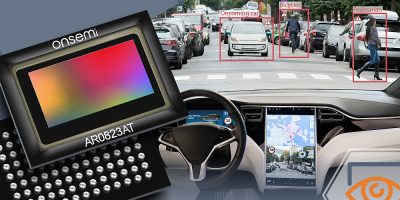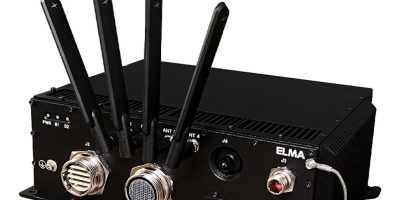The MIC-770 V3 has been developed by Advantech with the Nvidia L4 Tensor Core GPU as a compact, modular, industrial computer for factory automation, autonomous vehicles and automated optical inspection.
The modular industrial PC with MIC-75M20 expansion i-Module is compatible with the Nvidia L4 Tensor Core GPU which has 7,424 CUDA cores and 24Gbyte GDDR6 GPU memory. In addition it delivers 30.3TFLOs and consumes only 72W of power. The compact, scalable PC design, paired with the efficiency of the Nvidia L4 GPU can exploit AIoT (artificial intelligence of things) for diverse deep learning and edge inference applications in factory automation, autonomous vehicles, automated optical inspection (AOI) and AI prediction in medical equipment, as well as smart city video surveillance and transportation.
Other features include the use of 12th Gen Intel Core i9 / i7 / i5 / i3 processors (LGA 1700) and support for Advantech’s iBMC 1.2 remote management on WISE-DeviceOn.
The MIC-770 V3 is designed as an open source x86 platform capable of enabling the quick development of GPU-accelerated solutions. It uses MIC-75M20, a two-slot expansion i-Module, to create an integrated PC that is compatible with the Nvidia L4 Tensor Core GPU for AI-based edge computing and inference. It delivers energy-efficient universal acceleration for AI inference, video, and graphics applications and is suitable for global deployment in enterprise, cloud, and edge applications with limited space.
The MIC-770 V3’s modular design delivers enhanced functionality and flexibility for PCIe expansion via Advantech i-Modules and Flex I/O in the front panel. Adding a PCIE-1674 vision frame grabber card enables the connection of four cameras when used in autonomous vehicles, advised Advantech. Adding four GbE Flex I/O (98910770301) enables this controller to connect to lidar systems, thus enabling it to detect distances and shapes in its environment then pass on data to the Nvidia L4 GPU for the rendering of 3D models based on graphics analysis.
Operating temperature range is 0 to 40 degrees C. A dedicated server-grade air duct design improves the thermal management of the GPU, said Advantech and maintains a GPU IC operating temperature below 70.5 degrees C in environmental conditions up to 40 degrees C to deliver clock frequency residency.
The Advantech MIC-770 V3 compact industrial computer (with MIC-75M20 i-Module) is available for order now.







